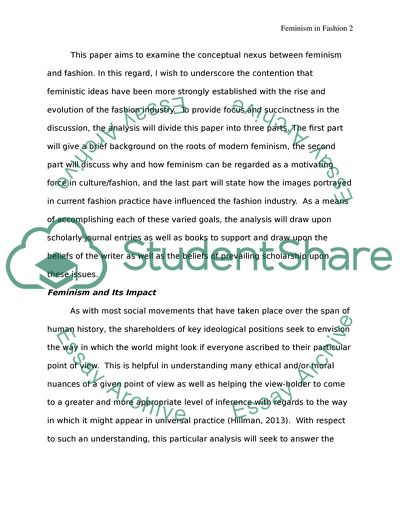Cite this document
(“The Progression of Fashion in Tandem with a Discussion of Feminism Essay”, n.d.)
The Progression of Fashion in Tandem with a Discussion of Feminism Essay. Retrieved from https://studentshare.org/social-science/1627666-the-subject-is-fashion-sociology-and-the-topic-for-the-paper-is-a-3000-word-critical-essay-showing-a-coherent-and-comprehensive-understanding-of-a-range-of-theories-and-their-application-to-the-analysis-of-fashion-practices
The Progression of Fashion in Tandem with a Discussion of Feminism Essay. Retrieved from https://studentshare.org/social-science/1627666-the-subject-is-fashion-sociology-and-the-topic-for-the-paper-is-a-3000-word-critical-essay-showing-a-coherent-and-comprehensive-understanding-of-a-range-of-theories-and-their-application-to-the-analysis-of-fashion-practices
(The Progression of Fashion in Tandem With a Discussion of Feminism Essay)
The Progression of Fashion in Tandem With a Discussion of Feminism Essay. https://studentshare.org/social-science/1627666-the-subject-is-fashion-sociology-and-the-topic-for-the-paper-is-a-3000-word-critical-essay-showing-a-coherent-and-comprehensive-understanding-of-a-range-of-theories-and-their-application-to-the-analysis-of-fashion-practices.
The Progression of Fashion in Tandem With a Discussion of Feminism Essay. https://studentshare.org/social-science/1627666-the-subject-is-fashion-sociology-and-the-topic-for-the-paper-is-a-3000-word-critical-essay-showing-a-coherent-and-comprehensive-understanding-of-a-range-of-theories-and-their-application-to-the-analysis-of-fashion-practices.
“The Progression of Fashion in Tandem With a Discussion of Feminism Essay”, n.d. https://studentshare.org/social-science/1627666-the-subject-is-fashion-sociology-and-the-topic-for-the-paper-is-a-3000-word-critical-essay-showing-a-coherent-and-comprehensive-understanding-of-a-range-of-theories-and-their-application-to-the-analysis-of-fashion-practices.


